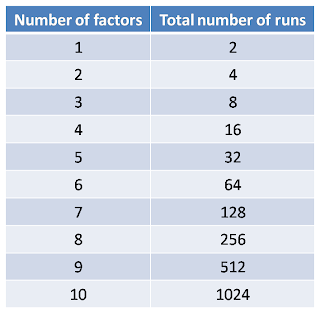In production of components, quality is the most important factor to the end customer. According to PMBOK "Quality the degree to which a set of inherent characteristics fulfill requirements. Quality is planned, designed and built in – not inspected in" . For ensuring quality of the product, a well defined sampling plan and Gage R&R prior to Inspection is absolutely needed.
Let us consider an example of manufacturing of PCBs. From a batch of 1500 PCBs, a random sample of size 100 has been selected and inspected. No defects were found and hence the total 1500 were shipped to customer. Next day after the receiving shipment, customer has found some defects. Customer has found 6 defects during initial inspection and shipped back the entire shipment of 1500 PCBs.
Now it is our turn to re-inspect. After complete inspection all 1500 pieces, a total of 34 defects were found. what went wrong? why we are unable to detect these during early detection.
Statistics has given us a way to find out, in the form of "hypergeometric" distribution. Before going to definition of Hypergeometric distribution, lets understand how we can use.
- the number of defects (we don't want any :-) ) in the sample = 0
- the size of the sample = 100
- the number of defectives in the population = 34
- the population size = 1500
In excel enter =HYPGEOMDIST(0,100,34,1500), which should give us 0.09321 or 9%.
In other words, there is a 91% chance that at least 1 of the 34 defective widgets should have been detected during the inspection process.
Definition of Hypergeometric distribution according to wiki " A discrete probability distribution that describes the number of successes in a sequence of n draws from a finite population without replacement"
We will cover more about quality & Inspection later
Let us consider an example of manufacturing of PCBs. From a batch of 1500 PCBs, a random sample of size 100 has been selected and inspected. No defects were found and hence the total 1500 were shipped to customer. Next day after the receiving shipment, customer has found some defects. Customer has found 6 defects during initial inspection and shipped back the entire shipment of 1500 PCBs.
Now it is our turn to re-inspect. After complete inspection all 1500 pieces, a total of 34 defects were found. what went wrong? why we are unable to detect these during early detection.
Statistics has given us a way to find out, in the form of "hypergeometric" distribution. Before going to definition of Hypergeometric distribution, lets understand how we can use.
- the number of defects (we don't want any :-) ) in the sample = 0
- the size of the sample = 100
- the number of defectives in the population = 34
- the population size = 1500
In excel enter =HYPGEOMDIST(0,100,34,1500), which should give us 0.09321 or 9%.
In other words, there is a 91% chance that at least 1 of the 34 defective widgets should have been detected during the inspection process.
The Conclusion
There were four theories that needed to be investigated.
- The measurement system is not repeatable and/or reproducible
- The units were not inspected at all
- Defective units were allowed to pass
- In correct sampling plan
Definition of Hypergeometric distribution according to wiki " A discrete probability distribution that describes the number of successes in a sequence of n draws from a finite population without replacement"
We will cover more about quality & Inspection later








